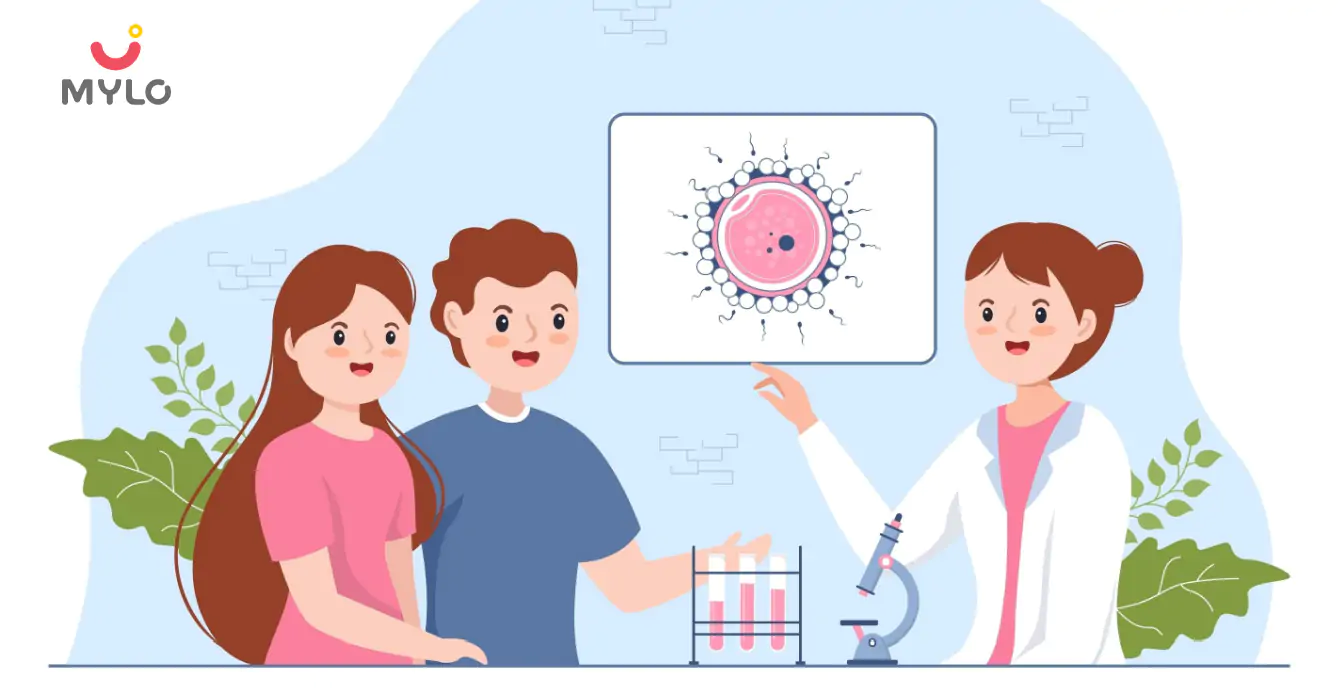Home

Women Specific Issues

Bulky Uterus: What You Need to Know About this Common Gynecological Issue
In this Article

Women Specific Issues
Bulky Uterus: What You Need to Know About this Common Gynecological Issue
Updated on 25 August 2023



Medically Reviewed by
Dr. Shruti Tanwar
C-section & gynae problems - MBBS| MS (OBS & Gynae)
View Profile

As a woman, there are few things more frightening than the thought of something being wrong with your reproductive system. One such gynecological condition that affects many women is a bulky uterus. Understanding what a bulky uterus means, its causes, and how it can be treated is important.
So, whether you're dealing with this issue yourself or simply seeking more information, this article will provide the answers you need to feel informed and empowered.
A bulky uterus is a common gynecological issue that can cause discomfort and anxiety for many women. Understanding what it means, its symptoms, causes, risk factors, diagnosis, and treatment options is crucial to managing this condition. This article provides a comprehensive guide to help you understand everything you need to know about the bulky uterus.
What is a bulky uterus?
A bulky uterus, also known as an enlarged uterus, is a condition where the uterus is larger than normal. The uterus is a pear-shaped organ that sits in the pelvis, and its size can vary depending on age and reproductive stage. In some cases, the uterus can become bulky due to various reasons, leading to complications and discomfort.
A bulky uterus means that the uterus has increased in size beyond its normal range. The normal size of the uterus varies depending on age and reproductive stage. For instance, the uterus is usually larger during pregnancy and menopause. However, when the uterus is larger than expected without a clear medical reason, it can indicate a bulky uterus. The condition can be benign or indicate a more serious underlying issue.
Symptoms of a bulky uterus
The symptoms of a bulky uterus can vary from person to person. Some women may not experience any symptoms, while others may experience discomfort and pain.
The common symptoms of a bulky uterus include:
- Heavy menstrual bleeding
- Prolonged menstrual periods
- Pelvic pressure or pain
- Frequent urination
- Difficulty urinating or passing stools
- Pain during intercourse
- Lower back pain
Causes of a bulky uterus
Several factors can cause a bulky uterus. The common causes of a uterus bulky in size include:
1. Uterine Fibroids
Uterine fibroids are non-cancerous growths in the uterus that can cause the uterus to enlarge.
2. Adenomyosis
Adenomyosis is a medical condition in which the inner lining of the uterus grows into the muscular walls of the uterus. This can cause the uterus to thicken and enlarge, sometimes up to double its usual size.
3. Endometrial Hyperplasia
Endometrial hyperplasia is the abnormal thickening of the uterine lining, while uterine polyps are small growths that develop in the uterus.
4. Uterine Polyps
Uterine polyps are growths in the inner lining of the uterus. They are usually benign, but they may cause problems with periods or fertility, and can be as large as a golf ball.
5. Cancer
In rare cases, a bulky uterus can indicate cancer, such as endometrial cancer or uterine sarcoma.
You may also like: Uterine Artery Embolization: A Non-Invasive Solution for Fibroids
Risk factors for a bulky uterus
Certain factors can increase the risk of developing a uterus bulky in size, including:
- Age
- Obesity
- Family history of uterine fibroids
- Hormonal imbalances
- High blood pressure.
Women who have never given birth and those who have had multiple pregnancies have a higher risk of developing a bulky uterus.
Diagnosis of a bulky uterus
To diagnose a bulky uterus, your doctor will perform a pelvic exam to measure the size of the uterus. They may also order imaging tests, such as an ultrasound, MRI, or CT scan, to get a clearer picture of the uterus's size and any underlying issue. In some cases, a biopsy may be necessary to check for cancerous cells.
Treatment options for a bulky uterus
The treatment options for a bulky uterus depend on the underlying cause and severity of the symptoms. In some cases, the condition may not require treatment, and the doctor may recommend monitoring the uterus's size. However, if the bulky uterus is causing discomfort or complications, treatment options may include the following:
1. Medications
Medications, such as hormonal birth control, can help regulate menstrual periods and reduce heavy bleeding. Nonsteroidal anti-inflammatory drugs (NSAIDs) can help relieve pain and discomfort.
2. Surgery
In severe cases, surgery may be necessary to remove the uterus or fibroids. Other procedures, such as endometrial ablation or uterine artery embolization, can also help manage symptoms.
Lifestyle changes to manage a bulky uterus
Certain lifestyle changes can help manage a bulky uterus and reduce symptoms. These include:
- Maintaining a healthy weight
- Exercising regularly
- Eating a balanced diet
- Avoiding alcohol and caffeine
- Stress management techniques, such as meditation and yoga
Complications of a bulky uterus
A bulky uterus can lead to several complications, such as
1. Anemia
Heavy menstrual bleeding can cause anemia, which can lead to fatigue and weakness.
2. Urinary Tract Infections
The enlarged uterus can also put pressure on the bladder and the bowel, causing urinary tract infections and difficulty passing stools.
3. Infertility
In some cases, a bulky uterus can cause infertility by interfering with the implantation of a fertilized egg.
You may like: Bicornuate Uterus: Meaning, Symptoms & Risks
When to see a doctor
If you experience any symptoms of a uterus bulky in size, such as heavy bleeding, pelvic pain, or discomfort during intercourse, you should see a doctor. It's also essential to see a doctor if you notice any changes in your menstrual cycle or experience unusual symptoms. Early detection and treatment can help manage the condition and prevent complications.
FAQs
1. Is bulky uterus normal?
An enlarged uterus, also referred to as a bulky uterus, can be caused by various medical conditions and is not considered normal. It can lead to symptoms like heavy bleeding, bloating and pain.
2. Is bulky uterus dangerous?
A bulky uterus can be caused by various conditions like fibroids, adenomyosis, and endometrial cancer. If left untreated, it can lead to complications such as infertility, pregnancy problems, and pain.
You may also like : Adenomyosis Vs Endometriosis: How to Spot the Symptoms and Seek Early Intervention
3. Can I get pregnant with bulky uterus?
Yes, it is possible to get pregnant with a bulky uterus, but it can interfere with fertilisation, implantation, disrupt the functioning of fallopian tubes, or even lead to infertility.
You may also like: Blocked Fallopian Tubes: How They Affect Your Chances of Conceiving
Conclusion
A bulky uterus can be a challenging condition to live with, but it's important to understand that it's a common gynecological issue that many women experience. With the right treatment and lifestyle changes, it's possible to manage the symptoms and prevent complications. If you experience any symptoms of a bulky uterus, don't hesitate to see a doctor and get the help you need.
References
1. Kehde BH, van Herendael BJ, Tas B, Jain D, Helsen K, Jochems L. (2016). Large uterus: what is the limit for a laparoscopic approach? Autops Case Rep.
2. Khan AT, Shehmar M, Gupta JK. (2014). Uterine fibroids: current perspectives. Int J Womens Health.





Medically Reviewed by
Dr. Shruti Tanwar
C-section & gynae problems - MBBS| MS (OBS & Gynae)
View Profile


Written by
Anupama Chadha
Anupama Chadha, born and raised in Delhi is a content writer who has written extensively for industries such as HR, Healthcare, Finance, Retail and Tech.
Read MoreGet baby's diet chart, and growth tips

Related Articles
Related Questions
Hello frnds..still no pain...doctor said head fix nhi hua hai..bt vagina me pain hai aur back pain bhi... anyone having same issues??

Kon kon c chije aisi hai jo pregnancy mei gas acidity jalan karti hain... Koi btayega plz bcz mujhe aksar khane ke baad hi samagh aata hai ki is chij se gas acidity jalan ho gyi hai. Please share your knowledge

I am 13 week pregnancy. Anyone having Storione-xt tablet. It better to have morning or night ???

Hlo to be moms....i hv a query...in my 9.5 wk i feel body joint pain like in ankle, knee, wrist, shoulder, toes....pain intensity is high...i cnt sleep....what should i do pls help....cn i cosult my doc.

Influenza and boostrix injection kisiko laga hai kya 8 month pregnancy me and q lagta hai ye plz reply me

Related Topics
RECENTLY PUBLISHED ARTICLES
our most recent articles

babyproducts
Mylo Baby Wipes Review

PCOS & PCOD
PCOS Treatment in Ayurveda: The Ultimate Guide to Natural Treatment Options

PCOS & PCOD
PCOS Acne: The Ultimate Guide to Causes, Treatment and Management

Diet & Nutrition
Maggi in Pregnancy: Is It Safe to Enjoy Your Favorite Instant Noodles?

Diet & Nutrition
Oats During Pregnancy: A Winning Combination for Both Mom and Baby

In Vitro Fertilization (IVF)
Types of IVF, Their Benefits and Side Effects Everything You Need to Know..
- How to Sterilize Baby Bottles: The Ultimate Step-by-Step Tutorial
- What to eat when trying to conceive
- White Discharge After IUI: Is It Normal & When to See a Doctor
- Diet & Exercises Your Wife Can Follow During Pregnancy
- Can a diet plan help deal with infertility in women and boost the chances of conception?
- How to Sterilize Breast Pump: A Comprehensive Guide for New Moms
- Bronchiectasis Meaning in Hindi | ब्रोन्किइक्टेसिस क्या होता है?
- The Ultimate Guide to Teej 2023: Celebrations, Traditions, and Dates
- Should I Pee After Sex if Trying to Get Pregnant? And 5 Other FAQs
- Menorrhagia: A Guide to Understanding Heavy Period Bleeding (Part 1)
- Indigestion and Heartburn During Pregnancy
- Understanding Follicular Study: A Comprehensive Guide to Female Fertility
- Maternity Fashion: How to Dress in Style in Each Trimester of Your Pregnancy?
- Oligomenorrhea: What Every Woman Needs to Know About Irregular Periods


AWARDS AND RECOGNITION

Mylo wins Forbes D2C Disruptor award

Mylo wins The Economic Times Promising Brands 2022
AS SEEN IN
















- Mylo Care: Effective and science-backed personal care and wellness solutions for a joyful you.
- Mylo Baby: Science-backed, gentle and effective personal care & hygiene range for your little one.
- Mylo Community: Trusted and empathetic community of 10mn+ parents and experts.
Product Categories
baby carrier | baby soap | baby wipes | stretch marks cream | baby cream | baby shampoo | baby massage oil | baby hair oil | stretch marks oil | baby body wash | baby powder | baby lotion | diaper rash cream | newborn diapers | teether | baby kajal | baby diapers | cloth diapers |








